Among other future concepts, Airbus is looking at blended wing body designs, to try and imagine the future of air travel. And it is far from being a simple theoretical project, with a scale prototype months into a flying programme.
It is a story that appeared early in 2020, that you probably didn’t catch because of bigger news. Airbus continues pursuing the design of a blended wing body concept. And It’s a shame people didn’t follow its development because some details in it are quite interesting. Like, for instance, its size.
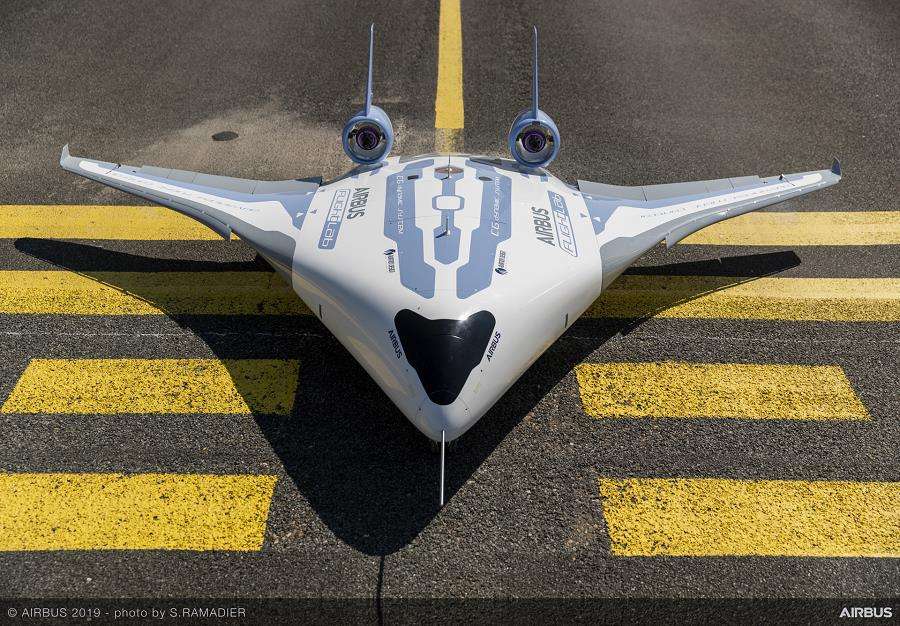
It seems people assume Airbus’ blended wing body design to be a future replacement of large widebodies. That’s not quite true. Airbus is thinking of the concept as a replacement for current single-aisle aircraft. The name for this Airbus project is ‘MAVERIC’. The scale prototype first flew in June 2019.
Implications of Airbus’ Blended Wing Body Design
The full-size aircraft will hold passengers in a very different arrangement to what we’re used to. Rather than sit six-across in a tube, passengers will be in a much more square-shaped cabin. To some this might seem alien, but it will be familiar to anyone travelling by boat or ferry. And Airbus’ blended wing body has more analogies with these ferries than you might think.
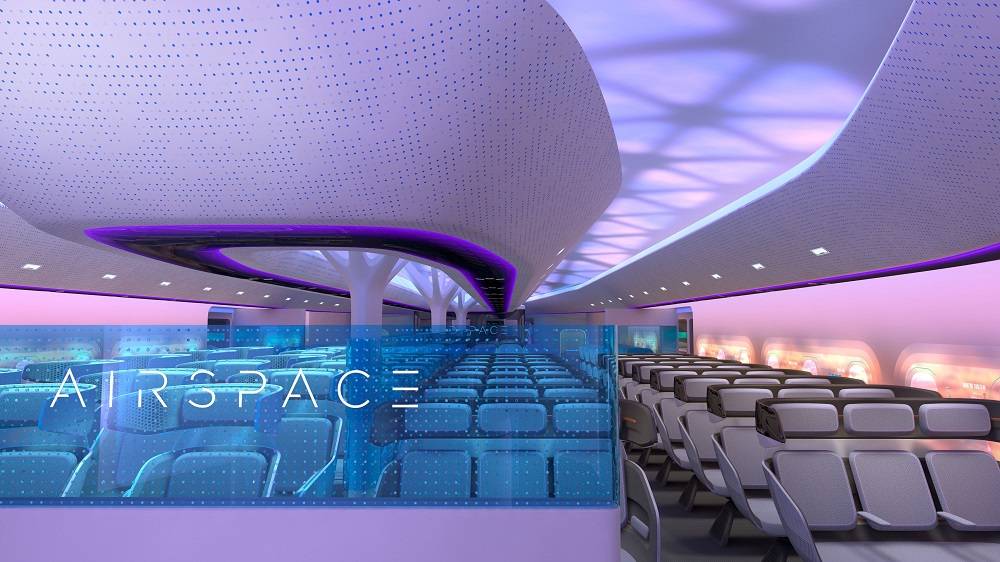
One of the first worries people have with such aircraft is the lack of windows. Airlines and manufacturers are looking at how ferries deal with the same issue. The answer revolves around keeping people entertained. There is plenty of technology available today, like bigger TV screens and maybe even virtual windows. Airbus’ blended wing body will probably feature both.
As ever, there is also a safety aspect in having windows. If anything unpleasant happens, rescue crews want to be able to use windows to see into the aircraft. Likewise, having windows means passengers have better awareness of the environment outside. Airbus will need to address these issues, possibly by having some windows in key places.
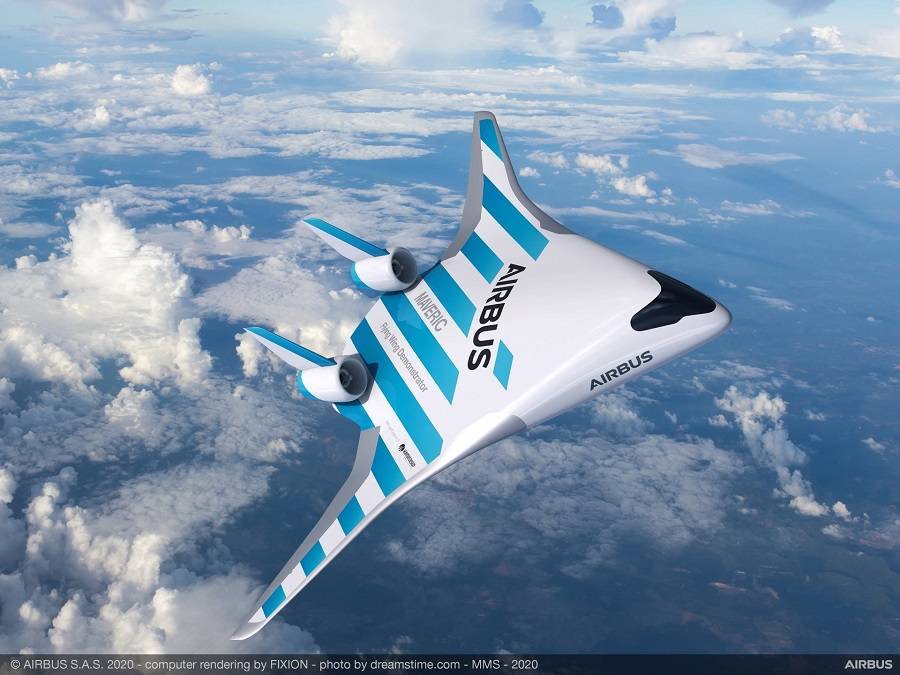
On a positive safety-related note, the squarer cabin of a blended wing body gives Airbus good marks, for evacuation. It is generally easier for people to move around in such a shape. However, the success of this design will depend on the number of doors that Airbus will give it.
Higher Efficiency – In Multiple Ways
Airbus estimates efficiency gains of 20% for the blended wing body aircraft. That is when comparing it to the newest crop of single-aisle aircraft, with the same engines. This is quite impressive, considering that the current LEAP-engined Airbus and Boeing narrowbodies are 14-15% more efficient than legacy versions. We had previously heard calls for hybrid aircraft to replace current jets, because a 20% efficiency improvement woudn’t be possible.
And as we already saw in September, the manufacturer is far from averse to hybrid, electric and hydrogen power designs. Airbus is working on all of these, including a blended wing body design with hydrogen power. This part of the Zero-E project seems to be an evolution of MAVERIC, with the rudders now at the wing tips. Note also the window, next to the door.
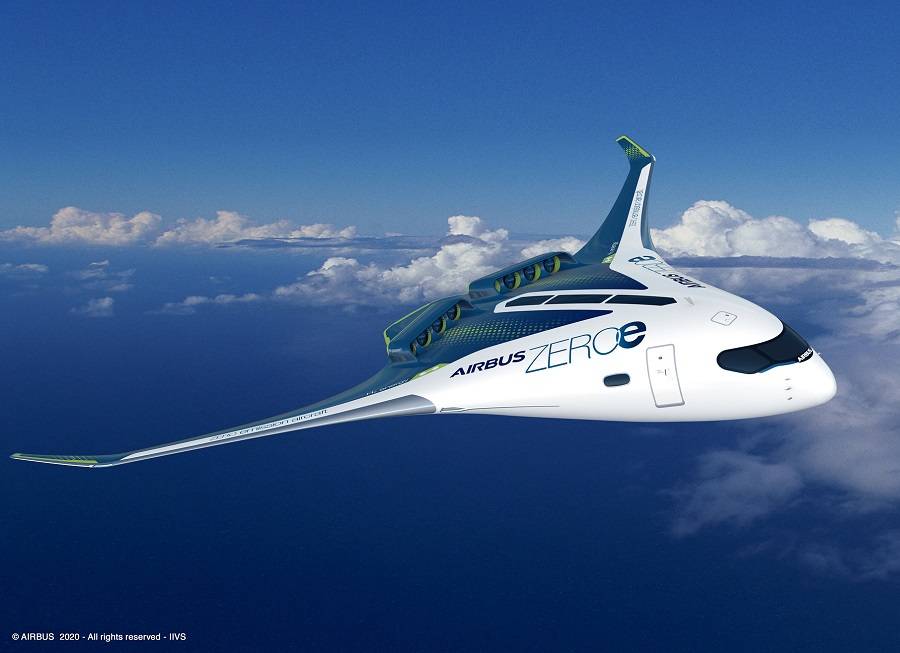
Note that the design is not a flying wing. Airbus chose a blended wing body design, probably to try and keep its overall width under control. The aircraft will need to use existing airport infrastructure. The increased width beyond that of current single-aisle jets will put the plane in a higher-cost tier of airport usage.
It remains for us to see what direction these developments will take. Using hydrogen would necessitate rethinking for fuel storage. So a change in design would be inevitable, and perhaps Airbus’ new design ticks all the right boxes. One way or another, efficiency seems to be driving demands for innovation. With engine makers showing interest, the field is getting more promising.

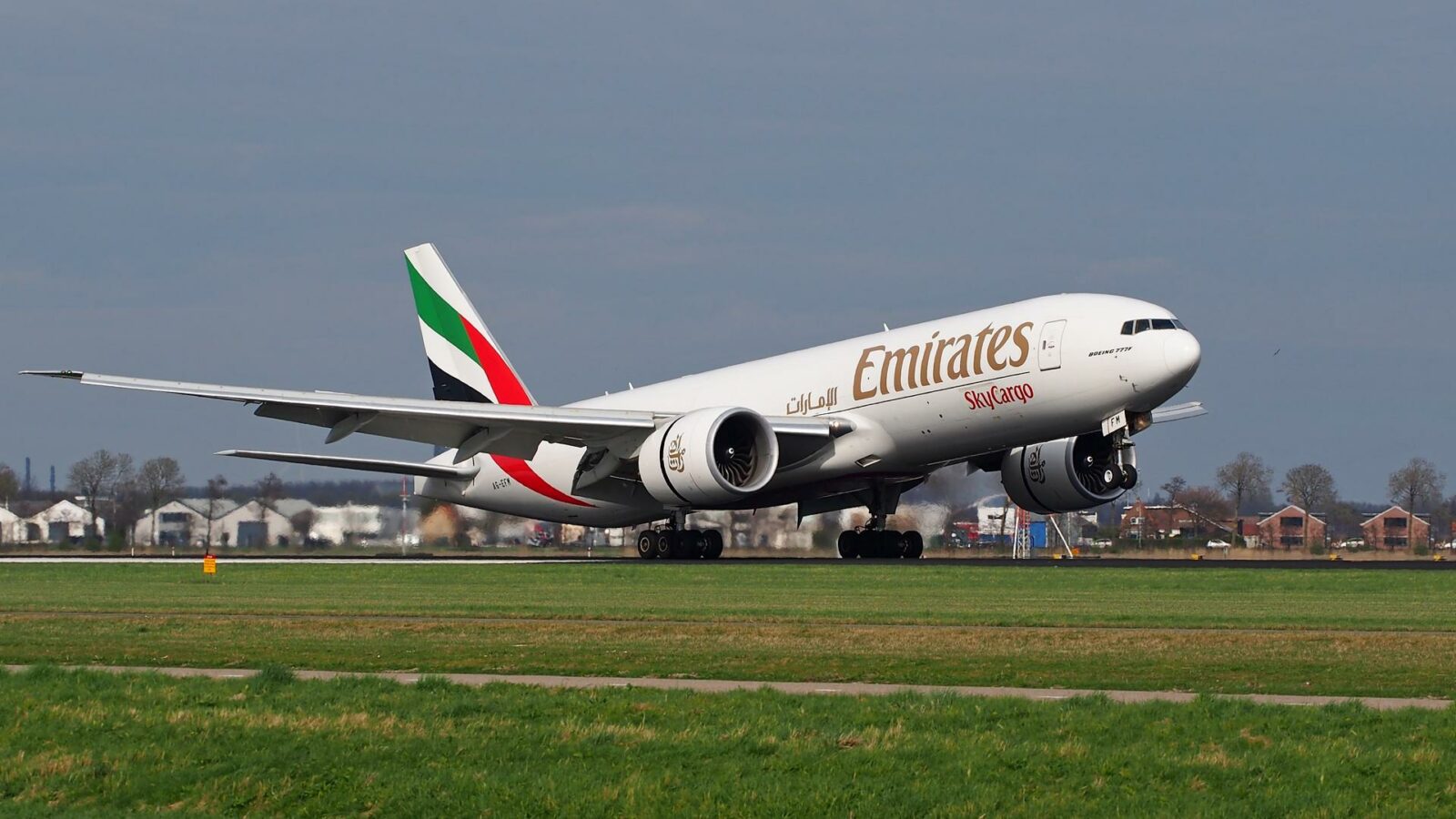


2 comments